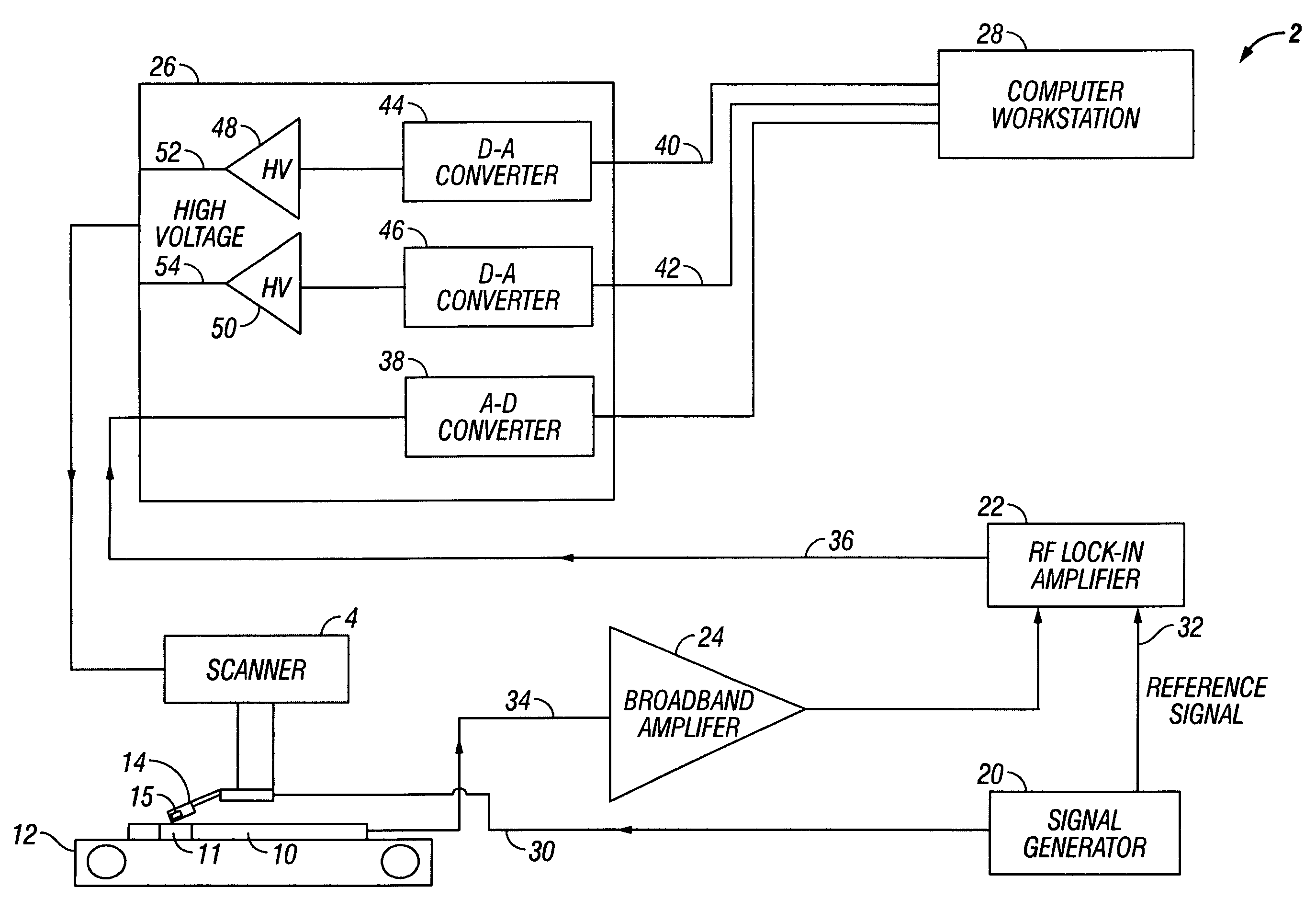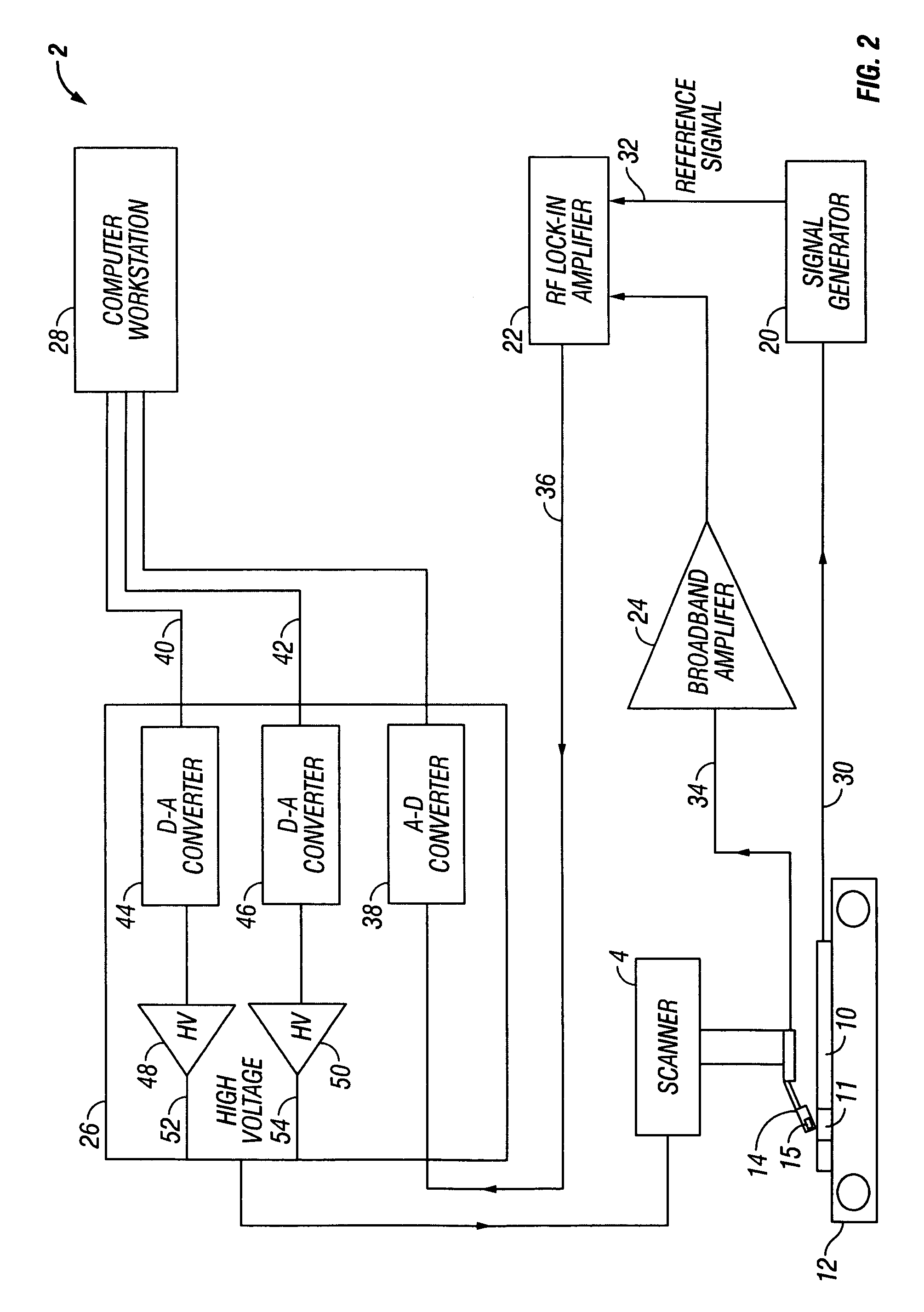Magnetic imaging microscope test system and its application for characterization of read and write heads for magnetic recording
a magnetic recording and test system technology, applied in the field of scanning microscopy, can solve the problems of inability to de-convolve, difficult and in some cases impossible to interpret images, and only work with static magnetic fields, and achieve the effect of extracting the stiffness of the sensor and hard bias properties
- Summary
- Abstract
- Description
- Claims
- Application Information
AI Technical Summary
Benefits of technology
Problems solved by technology
Method used
Image
Examples
Embodiment Construction
[0043]Turning now to the figures, wherein like reference numerals represent like elements in all of the several views, FIG. 1 illustrates a magnetic imaging microscope test system 2 adapted for high resolution magnetic characterization of magnetic field generating and sensing devices, and particularly disk drive inductive write heads and magnetoresistive read heads. The test system 2 includes a scanner assembly 4 that is preferably adapted for very finely controllable (e.g., ˜1 nm) resolution) two-dimensional movement in the directions shown by the x and y axes in FIG. 1. A conventional piezoelectric control system of the type used in a standard MFM may be used for this purpose. The scanner assembly 4 includes a piezoelectric assembly 6 that carries a probe arm 8. The probe arm 8 is cantilevered from the piezoelectric assembly 6 so as to extend toward a work piece 10. In the context of the present invention, the work piece 10 will comprise a magnetic field generating or sensing devi...
PUM
| Property | Measurement | Unit |
|---|---|---|
| time- | aaaaa | aaaaa |
| distance | aaaaa | aaaaa |
| stripe height | aaaaa | aaaaa |
Abstract
Description
Claims
Application Information
 Login to View More
Login to View More - R&D
- Intellectual Property
- Life Sciences
- Materials
- Tech Scout
- Unparalleled Data Quality
- Higher Quality Content
- 60% Fewer Hallucinations
Browse by: Latest US Patents, China's latest patents, Technical Efficacy Thesaurus, Application Domain, Technology Topic, Popular Technical Reports.
© 2025 PatSnap. All rights reserved.Legal|Privacy policy|Modern Slavery Act Transparency Statement|Sitemap|About US| Contact US: help@patsnap.com



